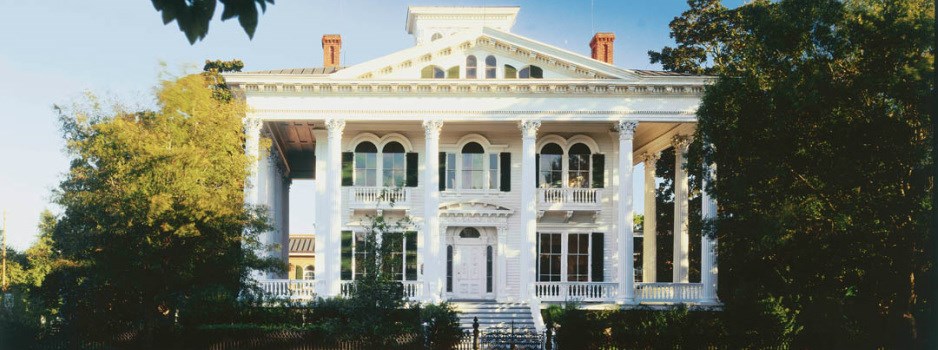
14 March . 2019
The Bellamy Mansion Museum
With a biography of European influence spanning back to the early 16th century, Wilmington is a city imbued with culture, diversity, and an extensive history. With experienced builders who have crafted various floor plans to accentuate the antique coastal homes of the 17th and 18th century that define Wilmington architecture, RiverLights community is a new neighborhood able to enhance and compliment the historical feel of the port city. Residents of the RiverLights community are situated just minutes away from the Historic District of Wilmington, where this antiquated past can still be seen at every turn from such buildings as the Cotton Exchange, Oakdale Cemetery, and various historic homes. One such historic home that has drawn in tourists, students, local residents, and historians for decades is the Bellamy Mansion Museum of History and Design Art.
History of the Bellamy Mansion
Constructed in 1861, the Bellamy Mansion was home to Dr. John D. Bellamy and his wife, Eliza. He practiced medicine for many years, but eventually transitioned his primary occupation to that of a merchant after acquiring land in both Columbus and Brunswick counties. He established Grovely and Grist plantations, one in which he harvested produce and at the other, ran a prominent turpentine plantation. As the number one naval-stores in the United States at that time and one of the most populous cities, Wilmington was the perfect place for Dr. Bellamy to obtain his fortune, the majority of which was acquired through just his production of turpentine, pitch, and tar alone.
Design and Construction
The Bellamy Mansion was designed by James F. Post, also responsible for constructing several buildings in the Historic District of Wilmington including Thalian Hall, with the aid of free and enslaved black artisans. These artisans were prominent members of the black community in Wilmington and were responsible for the construction of many Wilmington establishments. These workers were contractors, plasterers, and carpenters such as Elvin Artis, Henry Taylor, and William B. Gould whose creative works helped to shape the architectural beauty of Wilmington.
Following an arson fire started in the home in 1972 that destroyed the first floor of the mansion, master craftsmen were hired to repair the damage done to the original plaster work. These men, using original techniques, recreated the plaster and molding throughout the interior by hand in order to maintain the historic ingenuity that the initial artisans painstakingly fashioned. They made it their mission to honor and celebrate the dedication that went into the work done by free and enslaved workers of the time.
The Bellamy mansion is designed with both a Greek Revival and Italianate style which are reflected in the corinthian columns, acanthus leaf brackets, Italianate window trimmings and many of the interior facets of the home. The architectural design of the mansion was increasing in popularity at that time, but as a home of monumental proportions, the Bellamy Mansion was a beacon of influence for the architectural design of many historic homes in the port city.
Located less than five miles from RiverLights, residents have the opportunity to live within a community steeped in historical significance with access to a number of historic homes, museums, and sites related to the Civil War and the Antebellum South, and many that even predate that era. The Historic District allows for Wilmington citizens and visitors to immerse themselves in a lifestyle not found in just any town; a lifestyle that embodies the antiquity and restoration of the past, as if stepping back in time.
